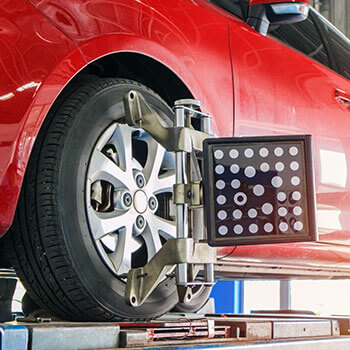
Wheel Alignment in San Miguel, Colorado
FOREWORD
Hi there, car owner! How are you doing? In this article, we will discuss the importance of wheel alignment for the safety and performance of your vehicle. We’ll cover the advantages of regular wheel alignments, the different types of alignment services, and the common signs that indicate your car needs an alignment.
We’ll also equip you with some actionable steps you can take to maintain proper wheel alignment and ensure your vehicle is operating at its best. So, buckle up and let’s dive into the world of wheel alignment in San Miguel, Colorado!
INTRODUCTION
Wheel alignment is an often overlooked but critical aspect of vehicle maintenance. Proper wheel alignment ensures that your tires make even contact with the road, maximizing your car’s performance, safety, and fuel efficiency. Neglecting wheel alignment can lead to premature tire wear, decreased handling, and even safety hazards.
San Miguel, Colorado, boasts several reputable auto repair shops that offer professional wheel alignment services. These shops are equipped with advanced alignment equipment and experienced technicians who can accurately adjust your vehicle’s alignment to manufacturer specifications.
This article will provide a comprehensive guide to wheel alignment in San Miguel, Colorado. We’ll discuss the advantages of regular alignments, the different types of alignment services available, and the signs that indicate your car may need an alignment. We’ll also provide a list of reputable auto repair shops in San Miguel, Colorado, that offer wheel alignment services.
ADVANTAGES OF WHEEL ALIGNMENT
Improved Tire Life

Proper wheel alignment ensures even tire wear, extending the life of your tires and saving you money on replacements. Misaligned wheels cause uneven tire wear, resulting in premature tire failure and reduced traction.
Enhanced Handling and Stability

Correct wheel alignment improves your car’s handling and stability, making it easier to control and maneuver. Misaligned wheels can cause the car to pull to one side while driving or make it difficult to keep the vehicle in a straight line.
Increased Fuel Efficiency

Proper wheel alignment reduces rolling resistance, which improves fuel efficiency. Misaligned wheels increase friction between the tires and the road, leading to increased fuel consumption.
Reduced Wear on Suspension Components

Wheel alignment affects the suspension system of your car. Misaligned wheels put stress on suspension components, such as ball joints, tie rods, and control arms, leading to premature wear and costly repairs.
Improved Safety

Proper wheel alignment is essential for safe driving. Misaligned wheels can compromise your car’s handling and stability, increasing the risk of accidents.
Reduced Noise and Vibration

Wheel alignment can reduce noise and vibration during driving. Misaligned wheels cause excessive tire noise and vibration, which can be uncomfortable and distracting.
Smooth and Quiet Ride

Proper wheel alignment contributes to a smooth and quiet ride. Misaligned wheels cause uneven tire wear and increased rolling resistance, resulting in a rough and noisy ride.
SERVICE TYPES FOR WHEEL ALIGNMENT
2-Wheel Alignment

This basic alignment service focuses on adjusting the front two wheels of your vehicle. It corrects toe and camber angles, ensuring they meet the manufacturer’s specifications.
4-Wheel Alignment

A more comprehensive service, 4-wheel alignment adjusts all four wheels of your vehicle. It corrects toe, camber, and caster angles, ensuring optimal performance and handling.
Thrust Angle Alignment

Thrust angle alignment involves adjusting the rear wheels of your vehicle so that they are parallel to the front wheels. This ensures that your car tracks straight and minimizes tire wear.
Corner Weight Scales

Corner weight scales are used to distribute the weight of your vehicle evenly across all four wheels. This optimizes suspension performance and handling.
Ride Height Adjustment

Ride height adjustment involves adjusting the suspension to raise or lower the vehicle’s body. This can improve handling and stability, especially for off-road vehicles.
SIGNS YOUR CAR NEEDS AN ALIGNMENT
Uneven Tire Wear

Uneven or excessive tire wear, particularly on the inner or outer edges, can indicate misaligned wheels.
Pulling to One Side

If your car consistently pulls to one side while driving, even on a straight road, it’s a strong indication of misaligned wheels.
Difficulty Steering

Misaligned wheels can make steering difficult, requiring more effort to turn or keep the car in a straight line.
Squealing or Screeching Tires

Squealing or screeching noises when turning or braking can be a sign of misaligned wheels causing excessive tire wear.
Vibrations in the Steering Wheel

Vibrations felt in the steering wheel, especially at higher speeds, can indicate misaligned wheels or other suspension issues.
Reduced Fuel Efficiency

Misaligned wheels increase rolling resistance, resulting in reduced fuel efficiency.
 Car Repair One Gate One Solution
Car Repair One Gate One Solution